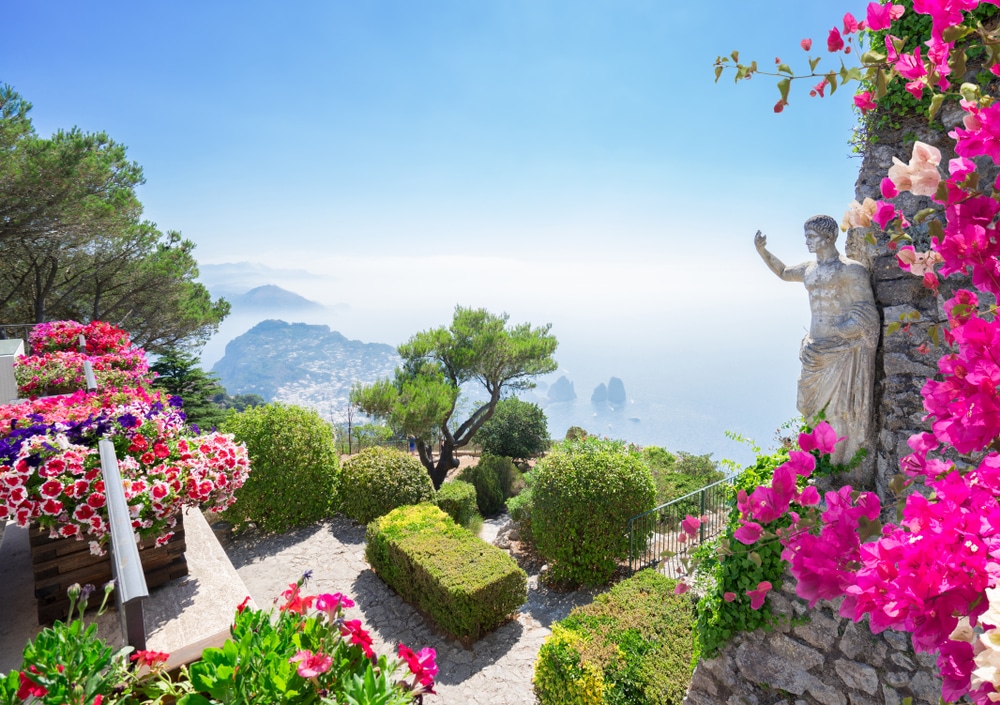Italy is traditionally one of the most popular holiday destinations in Europe, and German holidaymakers particularly like to travel to their southern neighbour. Thanks to coasts such as the Adriatic and Aegean Seas, historical sites such as Ostia and Pompeii, as well as metropolises with international flair such as Milan, Rome or Venice , tens of millions of tourists spend a short trip or extended holidays in Italy every year. Some places are particularly charming and enjoy particular popularity thanks to their prime location by the sea; just think of Capri.
Capri – the queen of the panorama
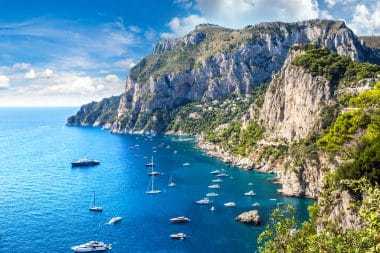
Only five kilometres from the Sorrento coast lies the famous fashionable island. Their colorful sunsets have been mentioned in poems and songs and attract enthusiastic photographers every evening in summer and spring. By the way, you can easily get from the mainland to Capri by ferry; there you will find historic monasteries and museums next to the villa complexes of national and international VIPs.
On only about 12 square kilometers, you will find beautiful nature as a visitor, which can already be spotted from the mainland. Thanks to a policy of preservation and restoration, not much has changed on the island in the last 100 years. This delights hundreds to thousands of tourists every day, who enjoy the contrast of the sharp bright rocks with the blue sea and the green meadows. Already in the last century, the author Axel Munthe described the island in the Gulf of Naples in his well-known novel “The Book of San Michele” and thus triggered a first boom of visitors.
The history of the island’s beauty
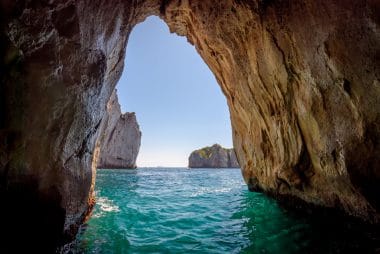
Capri has enjoyed growing popularity among Italian and international audiences not only since the 20th century. The “blue island”, as it is also called, attracted senators, consuls and other dignitaries who wanted to escape the mainland and build an appropriate resting place on the paradisiacal island as early as the times of the Roman Empire. Emperor Tiberius and Emperor Augustus even moved their royal summer residence from Rome to Capri, which increased the attraction of the small island even more.
As a result, magnificent villas and parks were created, which were decorated with picturesque mosaics and can still be visited today in their corresponding condition, such as the Tiberian palace Palazzo al mare or the Maria delle Grazie chapel. Churches, monasteries, villages and aqueducts were built and created a well-equipped infrastructure on Capri. In the following centuries through the Middle Ages, the island lost none of its splendour: kings, barons, artists, poets and many more chose Capri as their residence. The evergreen vegetation, complemented by olive trees, fruit trees and vines, contrasts with the azure blue of the Tyrrhenian Sea.
The most beautiful places on Capri
The “Funicolare” cable car
The most famous attraction of the island is without a doubt the cable car, which leads from the coast via the small town of Anacapri to the mountain Monte Solaro. Thanks to comfortable armchairs, you can move directly up over olive groves and slopes and enjoy a unique panorama. It’s almost a shame that the journey only takes about a quarter of an hour, because the peace and relaxation that comes over you on the ascent is unparalleled.
Even the city of Naples is very easy to see in clear weather, and with a bit of luck you can also make out the four rocks in the southeast with your eye.
The rock formation “Faraglioni”
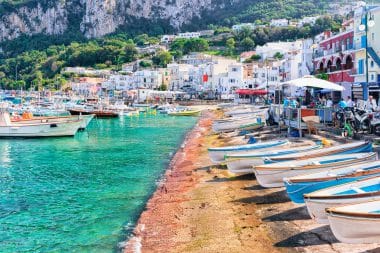
The string of cliffs and rocks is one of the most famous landmarks of the island and is located in the sea, just off the southeastern tip. They are particularly fond of being photographed and are therefore almost surrounded by tourists from the morning onwards – it is worth visiting here in the earlier hours of the day. A particularly attractive panorama is offered in the morning and evening hours when the sun goes down. Then the four Faraglioni are almost completely immersed in strong red, orange and yellow and get a golden shimmer – simply enchanting.
If you want to get particularly close to the formations, you can take a short trip on a small ship. Some of the rocks have natural tunnels that can even be crossed with the right boat.
The Municipalities of Capri and Anacapri
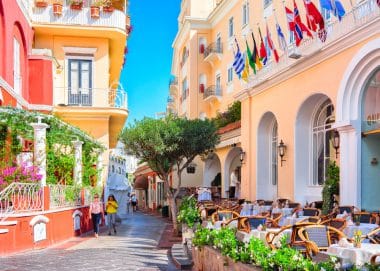
The island has become one of the most expensive spots in Italy thanks to its location and rather small size. Magnificent buildings rise on the cliffs and green hills, and in the municipalities of Capri and Anacapri itself, luxurious shops and boutiques have opened as a result, catering to the exclusive tastes of international and often well-heeled visitors. Both places have only a few thousand inhabitants each, but in summer and spring the number grows tenfold thanks to overnight guests and day visitors.
The meeting point par excellence is the Piazetta de Capri, a circular square in the middle of the town of the same name. From there, winding little alleys lead into the old quarters and invite you to take a long stroll, which also promises relaxation with a stop in one of the many cafés and taverns. Dishes such as braised sea bream, roasted wild rabbit in white wine sauce, various pasta variations and stuffed aubergine dumplings are particularly popular on the island. The local wine “Tiberio – Isola di Capri Doc“, a dry white wine that is also grown on Capri, tastes best with it.
Tip: Explore the villages in the early morning if possible. This way you can avoid the streams of visitors who roll through the small streets from 12 noon at the latest and enjoy a good cappuccino with a dry croissant in one of the cafés.


